Cantilever Dental Bridge
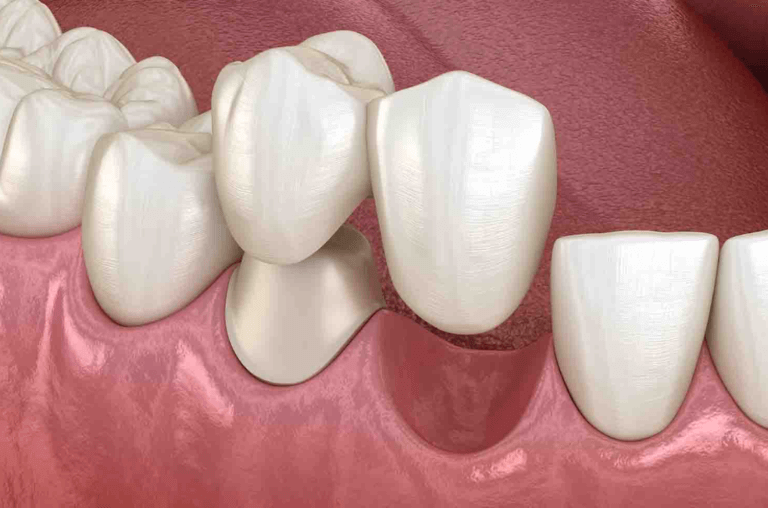
What Is A Cantilever Dental Bridge?
A Cantilever Dental Bridge is a specialized dental bridge restoration designed to address the challenges posed by a missing tooth. This innovative dental prosthetic provides an effective way to close the gaps left by missing teeth, enabling individuals to regain their ability to chew, speak, and smile with confidence.Unlike traditional dental bridges that are supported by adjacent teeth on both sides of the gap, a cantilever dental bridge is secured using a single neighboring tooth as its foundation. This innovative design makes it a particularly suitable option when there is only one tooth available adjacent to the gap. Before deciding on whether A Cantilever Dental Bridge are right for you, there are some things you should know:
- Who Needs A Cantilever Dental Bridge?
- What Are The Advantages Of A Cantilever Dental Bridge?
- What Are The Alternative Treatments If I Do Not Choose A Cantilever Dental Bridge?
- How Much Does A Cantilever Dental Bridge Cost?
- What Are The Steps In The Cantilever Dental Bridge Procedure?
- Can I Have A Cantilever Dental Bridge If I Am Pregnant?
- How Long Does A Cantilever Dental Bridge Last?
- What Are Common Problems with A Cantilever Dental Bridge?
If you have any further questions about A Cantilever Dental Bridge or other dental services offered at Atlas Dental, please contact us.

Free phone consultation
Are you missing teeth and have questions about Dental Bridges? Schedule a free phone consultation with our GTA dentist.

5 star google reviews
Our patients love us! See why people are choosing Atlas Dental for Dental Bridges.

Book Emergency Bridge visit online
Have a problem with your Dental Bridge? Book An Emergency Dental Appointment Online.
Who Needs A Cantilever Dental Bridge?
A cantilever dental bridge can be a suitable solution for individuals who are facing the challenges posed by a missing tooth and are seeking an effective way to restore both the functionality and appearance of their smile. If you find yourself in any of the following situations, a cantilever dental bridge might be the right option for you:
- Single Missing Tooth: If you have lost a single tooth and the adjacent teeth are healthy and strong, a cantilever dental bridge could be an ideal choice. This restoration allows for the replacement of the missing tooth without relying on the support of adjacent teeth on both sides of the gap.
- Minimal Bone Loss: Dental bridges, including cantilever bridges, rely on the underlying bone structure for support. If you have experienced minimal bone loss following the loss of a tooth, a cantilever dental bridge can often be securely anchored to the existing bone.
- Preserving Tooth Structure: Unlike traditional bridges, which involve placing crowns on adjacent teeth, Cantilever bridges are designed to preserve the natural structure of neighboring teeth. This makes them an attractive option for those who want to maintain the health of their existing teeth.
- Enhancing Aesthetics: Cantilever dental bridges are crafted with a keen focus on aesthetics. If you’re concerned about how missing teeth affect your smile’s appearance, a Cantilever bridge can help restore your self-confidence and give you a reason to smile again.
- Inability to Undergo Dental Implant Surgery: Some individuals might not be suitable candidates for dental implant surgery due to medical reasons or personal preferences. A cantilever dental bridge offers a non-surgical alternative that can effectively replace missing teeth.
- Budget Considerations: While dental implants are a popular choice for tooth replacement, they can be more expensive. If you are looking for a cost-effective solution that provides stability and improved aesthetics, a cantilever dental bridge might be a suitable option.
It’s important to note that the decision to opt for a cantilever dental bridge should be made in consultation with a qualified dental professional. A dentist will evaluate your specific oral health needs, examine your dental history, and discuss your preferences before recommending the most appropriate treatment plan. If you have further questions about Cantilever Dental Bridges, please contact us.
What Are The Advantages Of A Cantilever Dental Bridge?
A cantilever dental bridge offers several distinct advantages that make it a compelling choice for individuals seeking to replace missing teeth:
- Preservation of Adjacent Teeth: Unlike traditional dental bridges that require the preparation of adjacent teeth to serve as support, a cantilever dental bridge relies on just one neighboring tooth. This means that the healthy adjacent teeth on the other side of the gap remain untouched, preserving their natural structure and integrity.
- Minimized Discomfort: The preparation process for a cantilever dental bridge typically involves minimal discomfort. Since only one adjacent tooth is involved, the procedure is often less invasive compared to the preparation required for traditional bridges.
- Non-Surgical Solution: For individuals who are not suitable candidates for dental implant surgery, a cantilever dental bridge offers a non-surgical alternative. This can be particularly appealing to those who may have medical conditions that preclude them from undergoing surgical procedures.
- Enhanced Aesthetics: Missing teeth can impact your smile’s appearance, leading to self-consciousness and a reduced sense of self-esteem. A cantilever dental bridge effectively fills in the gap, restoring the natural appearance of your smile and helping you feel more confident.
- Restored Functionality: Chewing, speaking, and even smiling can become challenging with missing teeth. A cantilever dental bridge restores the proper alignment of teeth, enabling you to enjoy normal eating and speaking habits once again.
- Cost-Effective Option: While dental implants are a popular choice for tooth replacement, they can be more expensive and involve a more complex treatment process. A cantilever dental bridge provides a more budget-friendly alternative that still delivers stability and improved aesthetics.
- Quick Treatment Timeline: Compared to dental implant procedures that may require multiple appointments and healing periods, the process of getting a cantilever dental bridge is often quicker. This can be advantageous for individuals looking to restore their smile within a shorter time frame.
- Functional and Durable: Cantilever dental bridges are designed to withstand the pressures of daily use, providing durable and reliable solutions for replacing missing teeth.
As with any dental procedure, it’s essential to consult with a skilled and experienced dentist to determine whether a cantilever dental bridge is the right option for your specific situation. Your dentist will evaluate your oral health, discuss your goals, and create a personalized treatment plan that aligns with your needs and preferences. If you have further questions about Cantilever Dental Bridges, please contact us.
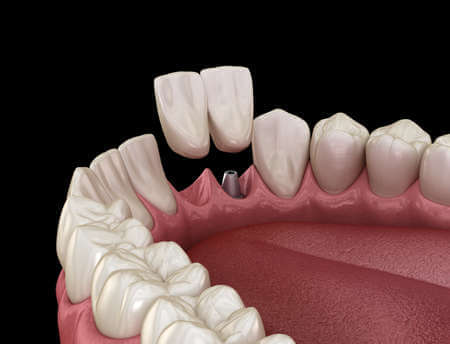
What Are The Alternative Treatments If I Do Not Choose A Cantilever Dental Bridge?
While a cantilever dental bridge can be a suitable option for many individuals with missing teeth, it’s important to explore alternative treatments to make an informed decision about your oral health. Here are some alternative treatments you might consider if a cantilever dental bridge is not the right choice for you:
- Maryland Bridge: Also known as a resin-bonded bridge, this option involves attaching a false tooth to the adjacent teeth using metal or porcelain wings. It’s a conservative choice that requires minimal alteration of the adjacent teeth, making it a suitable solution for certain cases.
- Zirconia Bridge: Zirconia is another popular dental material known for its strength and natural appearance. A zirconia bridge can provide durability and aesthetic appeal, although it may involve a more substantial removal of tooth structure during preparation.
- Porcelain Fused to Metal Bridge: This bridge combines the strength of metal with the aesthetics of porcelain. While it offers good durability and a natural appearance, the metal substructure might result in a slightly visible dark line at the gumline.
- Gold Bridge: Gold bridges are known for their strength and biocompatibility. While the appearance is distinct from natural teeth, some patients appreciate the durability and unique aesthetics of gold restorations.
- Lithium Disilicate Bridge: These bridges are made from a high-strength ceramic material and are known for their aesthetics and durability. They are a popular choice for visible areas of the mouth.
- Dental Implants: Dental implants are considered one of the most advanced and permanent solutions for replacing missing teeth. They involve surgically placing an implant (artificial tooth root) into the jawbone and attaching a crown on top. Dental implants offer excellent stability, durability, and aesthetics.
- Removable Partial Dentures: If you’re seeking a removable option, partial dentures might be suitable. These dentures are custom-made to fit your mouth and can replace one or more missing teeth. They are held in place by clasps that attach to existing teeth.
- Orthodontic Treatment: In cases where missing teeth have led to misalignment, orthodontic treatment such as braces or aligners might be necessary to correct the alignment issues before considering tooth replacement options.
- No Treatment: While not a recommended solution, choosing to do nothing about a missing tooth can lead to various oral health issues. Adjacent teeth might shift, bite alignment can be compromised, and bone loss may occur over time.
Each alternative treatment comes with its own set of benefits and considerations. Factors such as cost, durability, aesthetics, and your overall oral health will influence which option is the best fit for you. Consulting with your dentist is important to receive personalized recommendations based on your unique situation. If you have further questions about Cantilever Dental Bridges, please contact us.
Cost of Dental Bridge
Dental Bridges rely on retainers (natural teeth) to support pontics (false floating teeth where a tooth is missing). Therefore, the price of a dental bridge will depend on the number of pontics and retainers. A 3-unit bridge, for example, would cost $1207+538+1207 plus dental lab fee (approximately $800), which is equal to $3752. The codes relevant to dental bridges in the Ontario Dental Association’s Suggested Fee Guide appear as follows:
Pontics, Porcelain/Ceramic/Polymer Glass
- 62501 – Pontics, Porcelain/Ceramic/Polymer Glass Fused to Metal: $538 + Dental Lab Fee
Retainers, Porcelain/Ceramic/Polymer Glass
- 67201 – Retainer, Porcelain/Ceramic/Polymer Glass: $1207 + Dental Lab Fee
Other factors that could affect the cost of dental bridges include local dental association fee guides, dental bridge materials, qualifications of the dentist or prosthodontist, dental laboratory fees, and whether you have dental insurance coverage.
The Ontario Dental Association’s Suggested Fee Guide is a proposed fee structure that dentists in Ontario may or may not follow. Please consult with your dentist about fees before going ahead with treatment.
Dental bridges are sometimes considered a supplementary service by dental insurance plans and may or may not be covered by your dental insurance. Be sure to find out from your dental insurance plan provider how much you are eligible for before going ahead with dental treatment. Your dentist can help you submit an predetermination to your dental insurance.
For patients without dental insurance, Atlas Dental is pleased to offer dental financing through Dentalcard. Affordable payment plans start at 7.95% for terms of 6 months to 6 years. To learn more about Dentalcard dental treatment financing, follow this link.
What Are The Steps In The Cantilever Dental Bridge Procedure?
The process of getting a Cantilever Dental Bridge is a well-coordinated sequence of steps designed to ensure a seamless and successful outcome. Here’s an overview of the typical procedure:
- Initial Consultation: Your journey begins with an initial consultation with your dentist. During this visit, you will discuss your dental history, oral health goals, and the suitability of a cantilever dental bridge for your situation. Your dentist will conduct a thorough examination, possibly including X-rays or other imaging, to assess the condition of your teeth, gums, and underlying bone.
- Treatment Plan: Based on the examination, your dentist will create a personalized treatment plan tailored to your needs. This plan will outline the specifics of your cantilever dental bridge procedure, including the number of appointments required and the estimated timeline. Please review these dental bridge pre-visit instructions before your appointment.
- Tooth Preparation: In cases where the cantilever dental bridge is replacing a single missing tooth, the adjacent tooth on one side will be prepared. This involves removing a small portion of enamel to create space for the bridge’s support structure. If necessary, your dentist may take impressions of your teeth to ensure an accurate fit for the bridge.
- Impression and Shade Selection: Accurate impressions of your prepared teeth are taken using dental putty or digital scanning technology. This impression will serve as the basis for creating the custom bridge. Your dentist will also help you select a shade that matches the color of your natural teeth for a seamless blend.
- Temporary Bridge: While your permanent cantilever dental bridge is being fabricated, a temporary bridge might be placed to protect the prepared tooth and restore function during the interim period.
- Fitting and Adjustment: Skilled dental technicians will craft your cantilever dental bridge using the impressions and shade selection as a guide. Once the bridge is ready, you’ll return to your dentist’s office for the fitting. Your dentist will ensure that the bridge fits comfortably and accurately. Minor adjustments might be made to ensure a proper bite and alignment.
- Permanent Placement: With the bridge’s fit confirmed, it will be permanently cemented onto the prepared tooth. Your dentist will ensure that the bridge is securely affixed and that your bite is natural and balanced.
- Aftercare Instructions: Your dentist will provide you with dental bridge post-insert instructions to maintain the longevity of your cantilever dental bridge. This might include guidelines on oral hygiene practices, dietary considerations, and regular dental check-ups.
By following these steps and collaborating closely with your dentist, you can expect to achieve a restored smile that enhances both your appearance and your overall quality of life. If you have further questions about Cantilever Dental Bridges, please contact us.
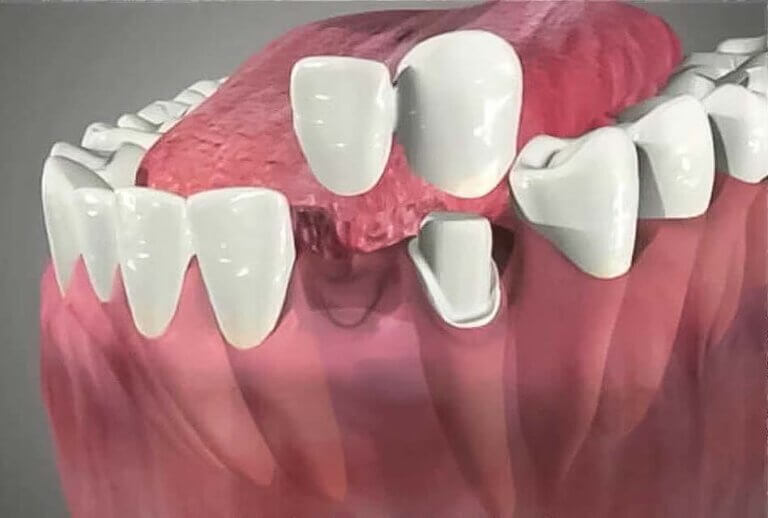
Can I Have A Cantilever Dental Bridge If I Am Pregnant?
Pregnancy is a significant phase in a woman’s life that brings about various physical and hormonal changes. If you are pregnant and considering dental procedures, including a cantilever dental bridge, there are several factors to consider to make an informed decision that prioritizes the well-being of both you and your baby.
- Consultation with Your Healthcare Provider: Before undergoing any dental procedure during pregnancy, including getting a cantilever dental bridge, it’s crucial to consult your obstetrician or healthcare provider. They can evaluate your overall health, the stage of your pregnancy, and any potential risks associated with the procedure.
- Timing: If the need for a cantilever dental bridge arises during pregnancy, your dentist and healthcare provider will discuss the timing of the procedure. Some treatments may be postponed until after childbirth to minimize any potential stress on the body.
- Local Anesthesia: Dental procedures often involve the use of local anesthesia to ensure your comfort. Many local anesthetics are considered safe during pregnancy, but your dentist will use the smallest effective dose and consult with your healthcare provider if needed.
- Radiographs (X-rays): In most cases, routine dental X-rays are avoided during pregnancy. If X-rays are necessary, your dentist will take precautions to minimize radiation exposure, such as using lead aprons and limiting the number of X-rays taken.
- Positioning and Comfort: Your comfort during the procedure is important. Your dentist will ensure that you’re positioned comfortably and that you’re able to breathe easily while lying down.
- Sedation: Conscious sedation or general anesthesia for dental procedures is generally avoided during pregnancy. If sedation is necessary, it will be discussed with your healthcare provider to ensure safety for both you and your baby.
Ultimately, the decision to have a cantilever dental bridge during pregnancy will be made based on careful consideration of your health, the specific circumstances, and the guidance of your healthcare provider and dentist. Open communication between all parties involved is crucial to ensure the best possible outcome for both your dental health and the health of your baby. If you have further questions about Cantilever Dental Bridges, please contact us.
How Long Does A Cantilever Dental Bridge Last?
On average, a well-maintained cantilever dental bridge can last anywhere from 10 to 15 years, and even longer in some cases. The longevity can vary based on individual factors and the care you provide for your oral health.
- Oral Hygiene: Proper oral hygiene practices, such as regular brushing, flossing, and routine dental check-ups, are crucial to maintain the health of both your natural teeth and the dental bridge. Poor oral hygiene can lead to decay, gum disease, and other complications that can affect the lifespan of the bridge.
- Dietary Habits: Consuming sugary foods and acidic beverages can contribute to tooth decay and compromise the integrity of the bridge. It’s important to maintain a balanced diet that supports your oral health.
- Bruxism (Teeth Grinding): If you have a habit of grinding your teeth (bruxism), it can place excessive pressure on the dental bridge, leading to premature wear and damage. Your dentist might recommend a night guard to protect the bridge if you’re prone to teeth grinding.
- Smoking and Tobacco Use: Tobacco use can have detrimental effects on your oral health, including an increased risk of gum disease and compromised bridge longevity.
- Material Quality: The materials used in the construction of the bridge play a significant role in its lifespan. High-quality materials and proper fabrication techniques can contribute to a longer-lasting restoration.
- Maintenance: Regular dental check-ups allow your dentist to monitor the condition of the bridge and address any issues before they escalate. Promptly addressing any concerns can extend the lifespan of the bridge.
- Bite Alignment: An improper bite alignment can place undue stress on the bridge, potentially leading to its premature failure. Ensuring that your bite is properly aligned is crucial for the longevity of the bridge.
By practicing good oral hygiene, making healthy lifestyle choices, and adhering to your dentist’s recommendations, you can maximize the longevity of your cantilever dental bridge and enjoy its benefits for years to come. If you have further questions about Cantilever Dental Bridges, please contact us.
What Are Common Problems with A Cantilever Dental Bridge?
A cantilever dental bridge is a reliable solution for replacing missing teeth, but like any dental restoration, it may encounter certain issues over time. Understanding these potential problems can help you be proactive in maintaining the health and longevity of your bridge. Here are some common problems that can arise with a cantilever dental bridge:
- Tooth Decay: While the bridge itself is not susceptible to decay, the natural tooth serving as its support can still be affected. Poor oral hygiene or difficulties in cleaning around the bridge can lead to decay in the supporting tooth, compromising the stability of the bridge.
- Gum Disease: Inadequate oral hygiene can also lead to gum disease around the bridge area. Gum inflammation and infection can affect the bridge’s stability and long term survival.
- Loose Bridge: Over time, the cement that holds the bridge in place may weaken, causing the bridge to become loose. A loose bridge can lead to discomfort, difficulty in chewing, and increased risk of decay.
- Fractured or Chipped Bridge: Just like natural teeth, dental bridges can experience fractures or chips, especially if they are subjected to excessive force or trauma. Avoid biting on hard objects or using your teeth as tools to prevent damage.
- Bite Misalignment: If the bite alignment is not properly adjusted after bridge placement, it can lead to uneven pressure on the bridge and surrounding teeth. This can cause discomfort and even damage over time.
- Bruxism Impact: Individuals who grind or clench their teeth (bruxism) can put extra stress on the dental bridge, potentially leading to damage or failure over time. A night guard can help protect the bridge if you have this habit.
- Tooth Sensitivity: Sensitivity in the teeth supporting the bridge is possible, especially if the tooth structure was compromised during the preparation process.
- Wear and Tear: Over the years, normal wear and tear can affect the bridge’s integrity, causing it to become less secure or altering its appearance.
By practicing good oral hygiene, seeking timely dental care, and being mindful of potential issues, you can enjoy the benefits of your cantilever dental bridge while minimizing the risk of complications. If you experience any discomfort, sensitivity, or changes in the fit of your bridge, it’s important to contact your dentist for a thorough evaluation and appropriate treatment. If you have further questions about Cantilever Dental Bridges, please contact us.
We also think you’ll like…
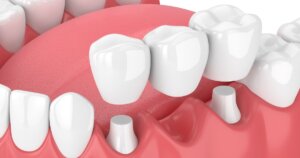
Dental Bridge Pre-Operative Instructions
Dental Bridge Pre-Operative Instructions What You Should Do Before Your First Dental Bridge Appointment Dental bridges, also known as fixed partial dentures, literally bridge the

Dental Bridge Recementation
Dental Bridge Recementation What Is Dental Bridge Recementation? For individuals with missing teeth, Dental Bridges provide a functional and aesthetic solution, restoring the ability to
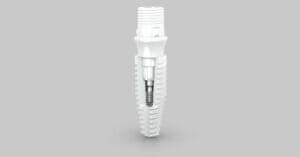
Zirconia Dental Implants
Zirconia Dental Implants What Are Zirconia Dental Implants? Zirconia dental implants are an alternative to traditional titanium dental implants for replacing missing teeth. Unlike titanium

Lithium Disilicate Dental Bridge
Lithium Disilicate Dental Bridge What Is A Lithium Disilicate Dental Bridge? If you’re missing one or more teeth, a dental bridge could be the solution
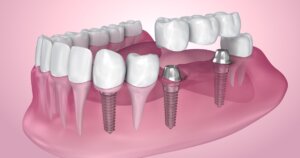
Endosteal Dental Implant
Endosteal Dental Implant What Is An Endosteal Dental Implant? Endosteal Dental Implants stand as a revolutionary solution for restoring smiles and dental functionality. These implants
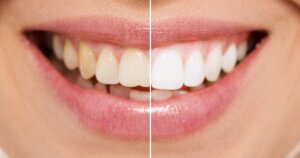
Smile Makeover
Smile Makeover What Is a Smile Makeover? A confident smile can brighten up a room and leave a lasting impression. It is a reflection of

